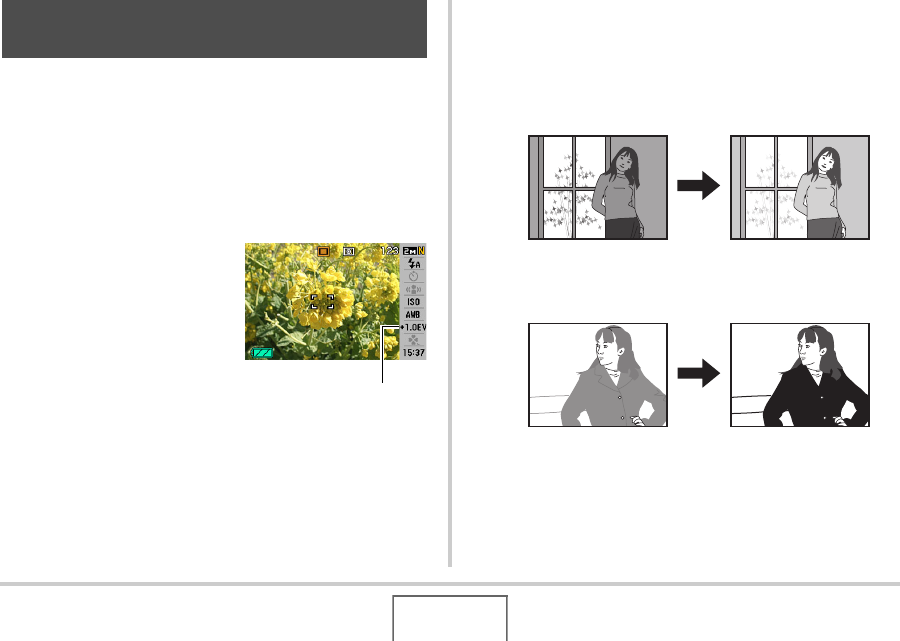User Guide
Table Of Contents
- UNPACKING
- CONTENTS
- QUICK START BASICS
- INTRODUCTION
- GETTING READY
- SHOOTING A SNAPSHOT
- SHOOTING A MOVIE
- USING BEST SHOT
- ADVANCED SETTINGS
- Changing the Focus Mode
- Correcting Image Brightness (EV Shift)
- Controlling White Balance
- Specifying ISO Sensitivity
- Specifying the Metering Mode
- Using the Camera’s Filter Effects
- Controlling Image Sharpness
- Controlling Color Saturation
- Adjusting Image Contrast
- Date Stamping Snapshots
- Using the On-screen Histogram to Check Exposure
- Other Useful Recording Functions
- VIEWING SNAPSHOTS AND MOVIES
- EDITING IMAGES
- USING AUDIO
- MANAGING YOUR FILES
- DELETING FILES
- OTHER SETTINGS
- Configuring Camera Sound Settings
- Turning the Startup Screen On or Off
- Specifying the File Name Serial Number Generation Rule
- Changing the Camera Date and Time Setting
- Using World Time
- Changing the Display Language
- Changing the USB Port Protocol
- [_] (REC) and [>] (PLAY) Button Settings
- Formatting Built-in Memory
- PRINTING
- USING THE CAMERA WITH A COMPUTER
- APPENDIX

106
ADVANCED SETTINGS
You can manually adjust an image’s exposure value (EV value)
before shooting it. This feature helps to achieve better results
when shooting a backlit subject, a strongly lit subject indoors, or
a subject that is against a dark background.
Exposure Compensation Value: –2.0EV to +2.0EV
Unit: 1/3EV
1. In the REC mode, press [SET].
2. Use [S] and [T] to
select the third option
from the bottom (EV
Shift).
3. Use [W] and [X] to adjust the exposure
compensation value.
[X]: Increases the EV value. A higher EV value is best used
for light-colored subjects and backlit subjects.
* Increasing the EV value also works well with the
BEST SHOT “Backlight” scene.
[W]: Decreases the EV value. A lower EV value is best for
dark-color subjects and for shooting outdoors on a
clear day.
To cancel exposure compensation, adjust the value until it
becomes 0.0.
Correcting Image Brightness (EV
Shift)
EV Shift Value
B










